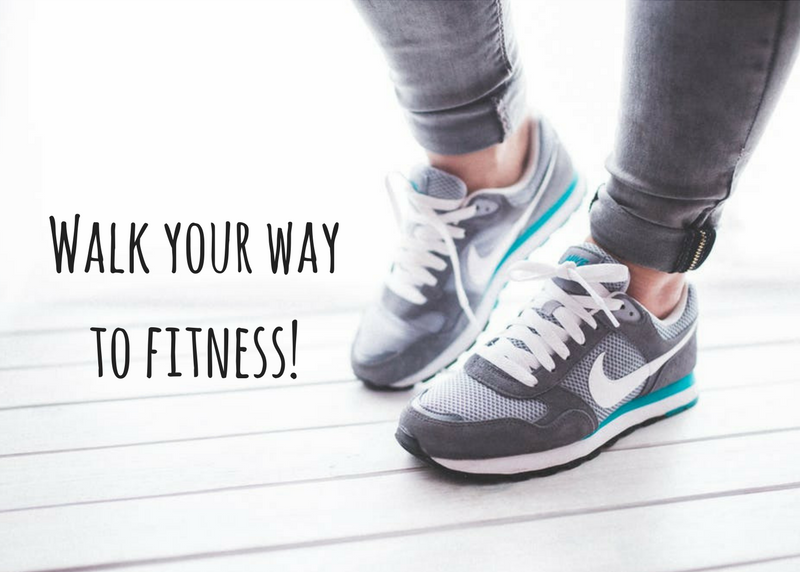So many ways to workout, so many excuses to not do it.

Running? Can affect the knees if the footwear is incorrect! Swimming? I can’t redo my hair that much! Pilates? No time in my schedule! Spin class? Hate riding bicycles! I’m grown. Walking? Um… well… I can do that.
Today kicks off National Walking Month. And yes the simple act of walking can do more for you than you ever thought possible. And interestingly enough, you don’t have to be a speed walker to get the benefits. It might not be trendy, but research shows that the benefits gained from simply walking are just as good as all the “cool” ways to exercise.

Maintain a healthy weight
Yes, walking can trim your waistline. More importantly, it can be more effective than you may think.
According to NutriStrategy, if you weigh 155 pounds, a 30-minute brisk walk at 3.5 mph will burn 134 calories. If you weigh 180 pounds, you will burn 156 calories.. Of course if you want to burn more… walk more. It’s all about the maths.
And it’s not just about metabolism, it affects your blood sugar levels too! A 2013 study published in Diabetes Care found that three 15-minute post-meal walks each day were more effective at regulating blood-sugar levels than was a single 45-minute walk mid morning or in the afternoon.
Manages or Prevents Chronic Disease
In a 2013 study published in Arteriosclerosis, Thrombosis, and Vascular Biology, both daily runners and walkers lowered their blood pressure by at least 4.2 percent and their risk of heart disease by at least 4.5 percent. To reach the calorie burn of a run, the walkers covered a distance about 1½ times farther than that of the runners.
Any type of physical activity will improve metabolism, regulate hormones, and increase your immunity to disease. Walking can even help with cancer.
According to The Guardian: Walking a mile a day can cut risk of dying from cancer by 40%. Exercise can reduce chance of dying from breast or prostate cancer and help with treatment side-effects. And in a study by the American Cancer Society it was reported that an hour of daily walking may reduce a woman’s likelihood of a breast cancer diagnosis by 14 percent.
Improves Memory and Brain Function
According to a 2011 study published in Proceedings of the National Academy of Sciences, elderly subjects who walked for 40 minutes three times a week for a year experienced a 2 percent average increase in size of the hippocampus, the part of the brain that controls memory and emotion.
And according to a Harvard study:
Exercise helps memory and thinking through both direct and indirect means. The benefits of exercise come directly from its ability to reduce insulin resistance, reduce inflammation, and stimulate the release of growth factors—chemicals in the brain that affect the health of brain cells, the growth of new blood vessels in the brain, and even the abundance and survival of new brain cells.
Indirectly, exercise improves mood and sleep, and reduces stress and anxiety. Problems in these areas frequently cause or contribute to cognitive impairment.
Improves your mood
“Just 10 minutes of walking at the pace you would use if you were late for an appointment—but obviously without that stress of being late—can boost your mood for two hours,” says Robert Thayer, Ph.D., the author of Calm Energy: How People Regulate Mood With Food and Exercise ($25, amazon.com).
This sheer pleasure of walking is highlighted in one of the most watched music videos, “Happy” by soul singer Pharrell Williams. It’s a wonderful celebration of life on your feet showing many different types of people (including Magic Johnson, Steve Carrell and Jimmy Kimmel) strutting, stepping, striding and sashaying down city streets. It’s been viewed over 946 million times on You Tube.
Walking Your Way To Fitness

Start out small. Remember slow and steady wins the race. First you must make the decision to walk out the door. It can be as simple as a short 20 minute walk. That’s all? Yes, that’s all. Do this every day for a week. If this was easy for you, add five minutes to your walks next week (total walking time 25 minutes). Keep adding 5 minutes until you are walking as long as desired.
The most important piece of this is getting into a routine. It takes two weeks to make a new habit. Keep pushing yourself to do it. You can carve out a small bit of your day for your health and wellbeing yes?
Start off with slow, short sessions and build your way up gradually. Don’t even think about speed right now. After you have been walking for several weeks and it’s become a healthy habit, you can slowly start picking up your pace. If you have a medical condition or any health concerns be sure to check with your doctor for advice before you begin a routine.
Turning your normal walk into a fitness stride requires good posture and purposeful movements. Ideally, here’s how The Mayo Clinic says you’ll look when you’re walking:
- Your head is up. You’re looking forward, not at the ground.
- Your neck, shoulders and back are relaxed, not stiffly upright.
- You’re swinging your arms freely with a slight bend in your elbows. A little pumping with your arms is OK.
- Your stomach muscles are slightly tightened and your back is straight, not arched forward or backward.
- You’re walking smoothly, rolling your foot from heel to toe.
Take a walk with a coworker at lunch. Not only will you feel better by exercising, you’ll have someone to talk to and share the journey with – which ALWAYS makes it better. Get off the bus or train a stop or two early. See if you can incorporate a little bit of walking in your life… you’ll not regret it.





























